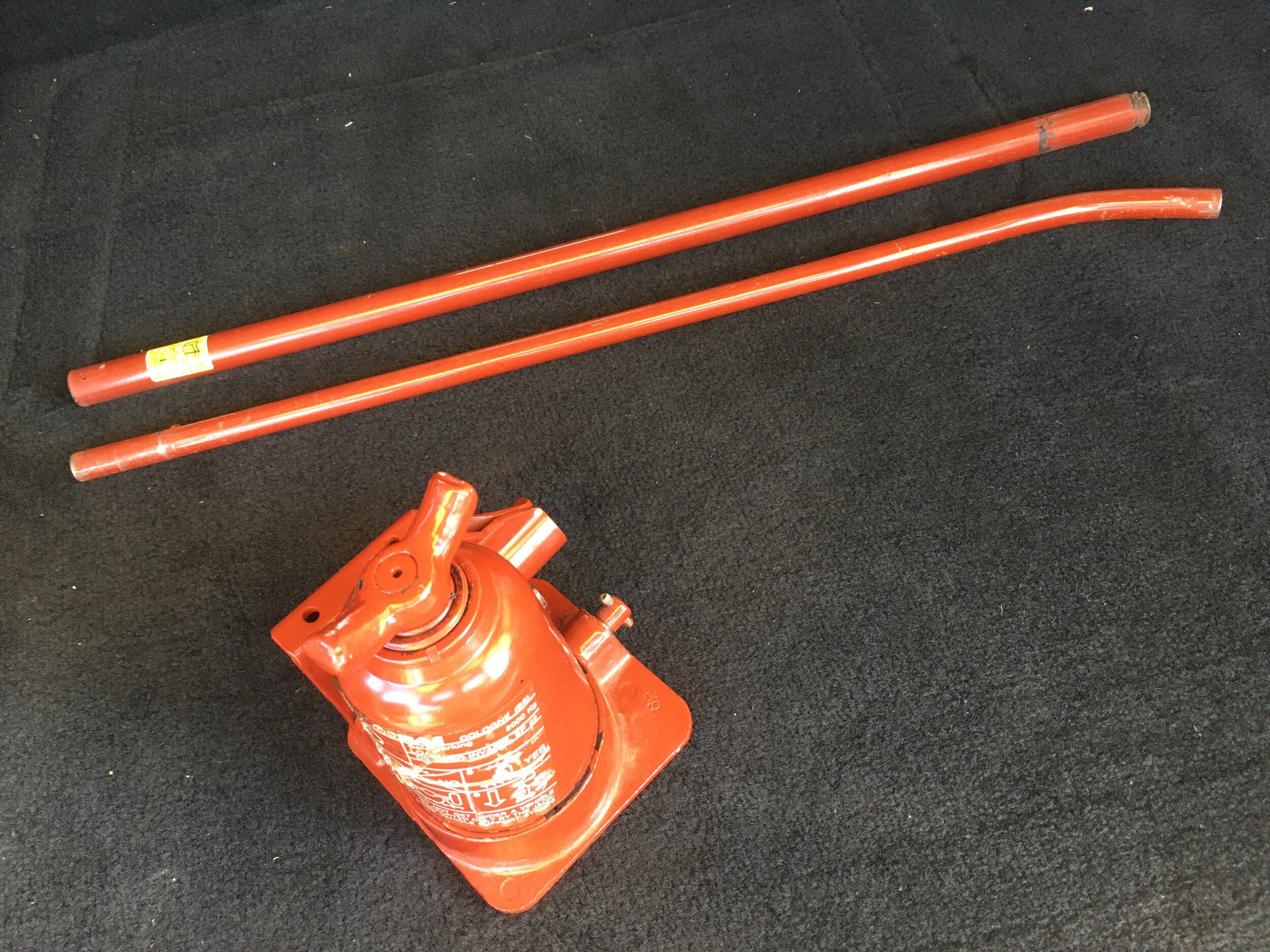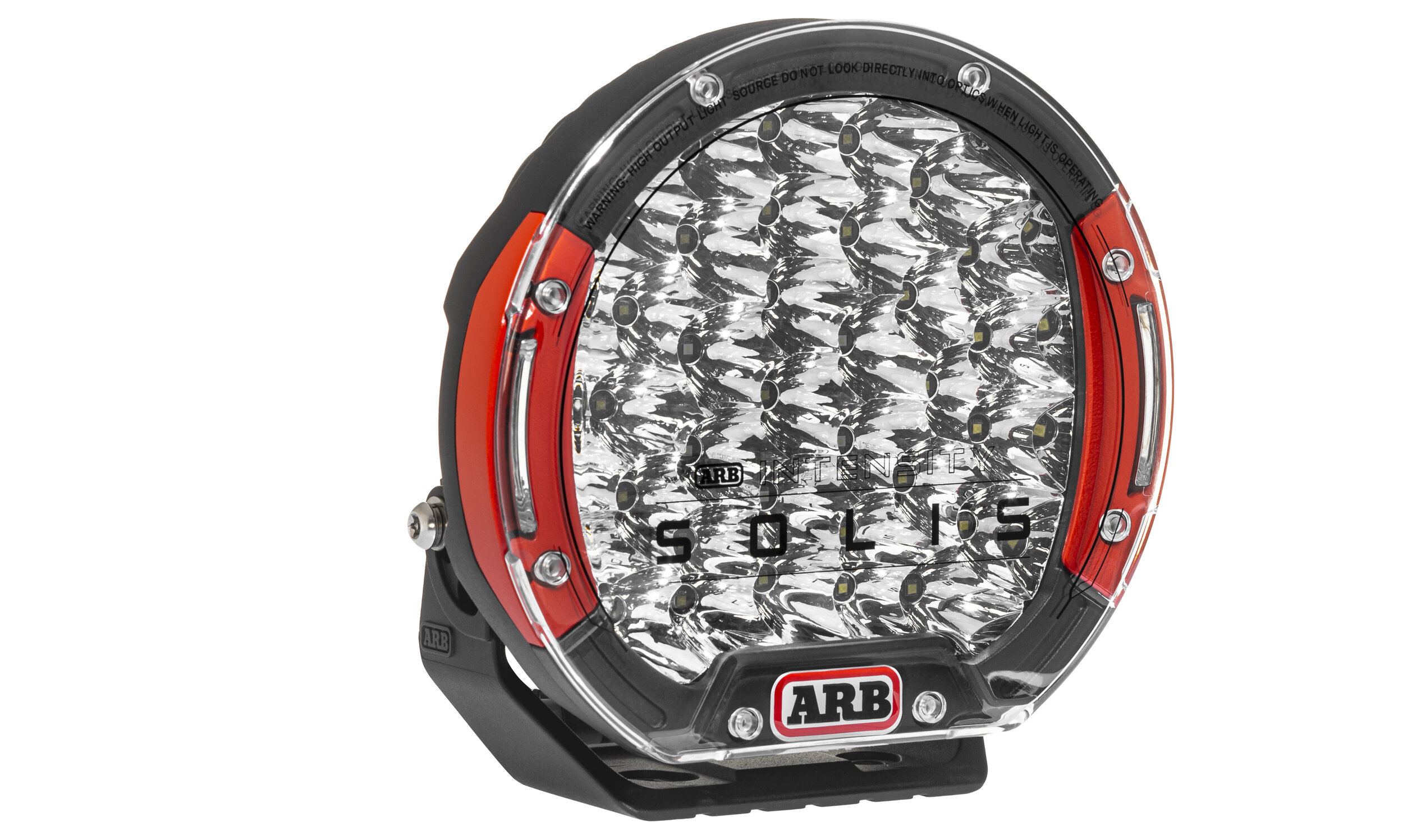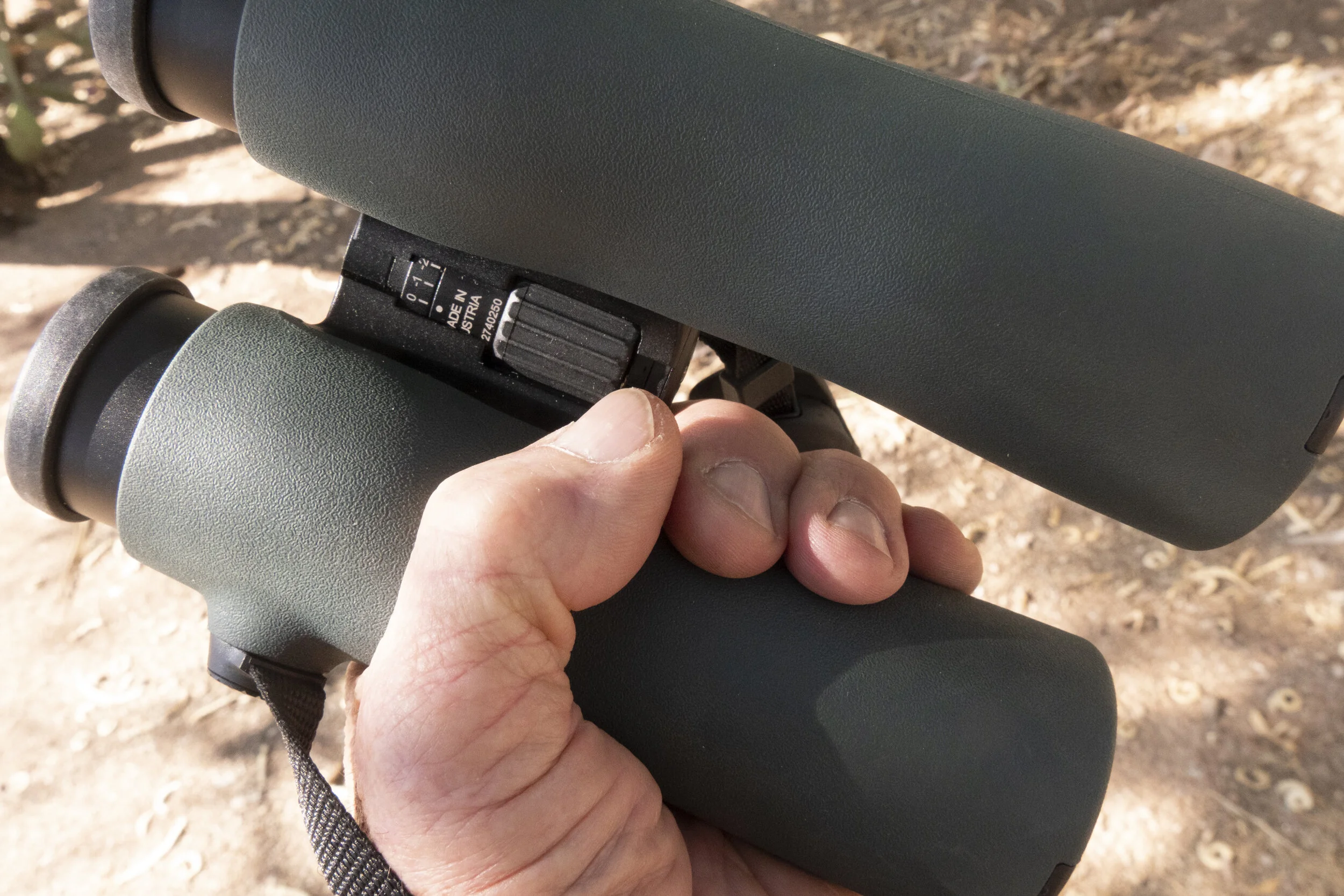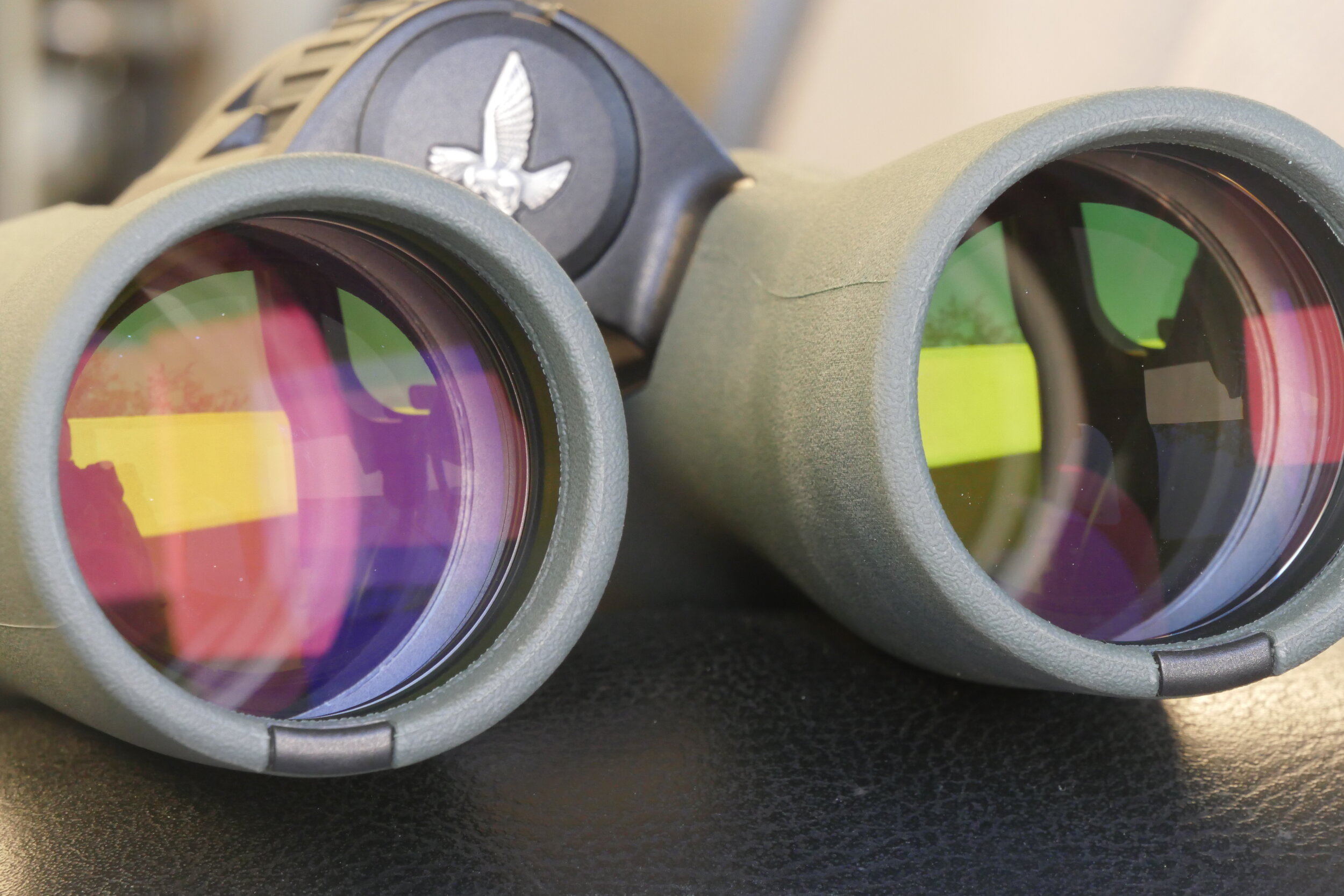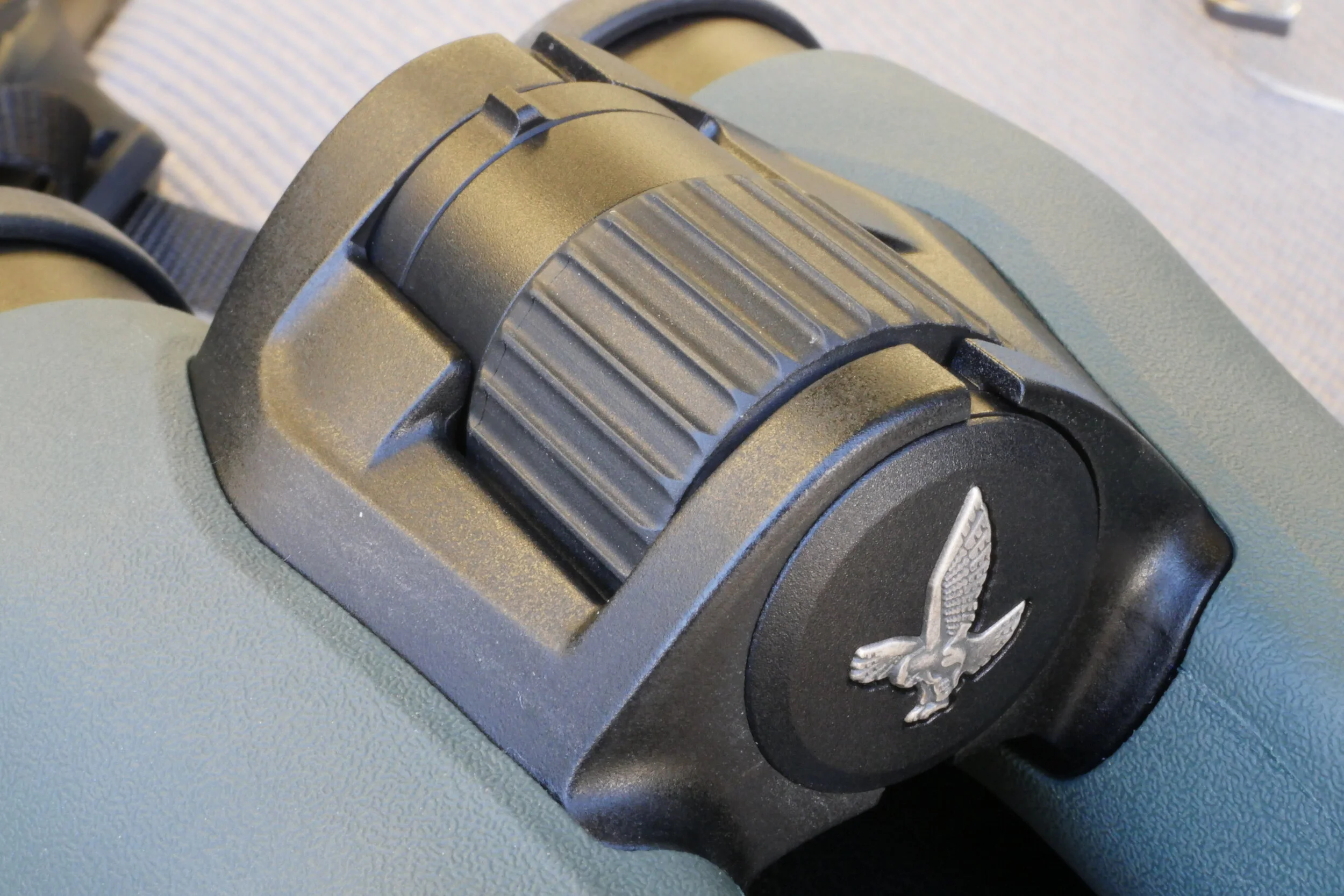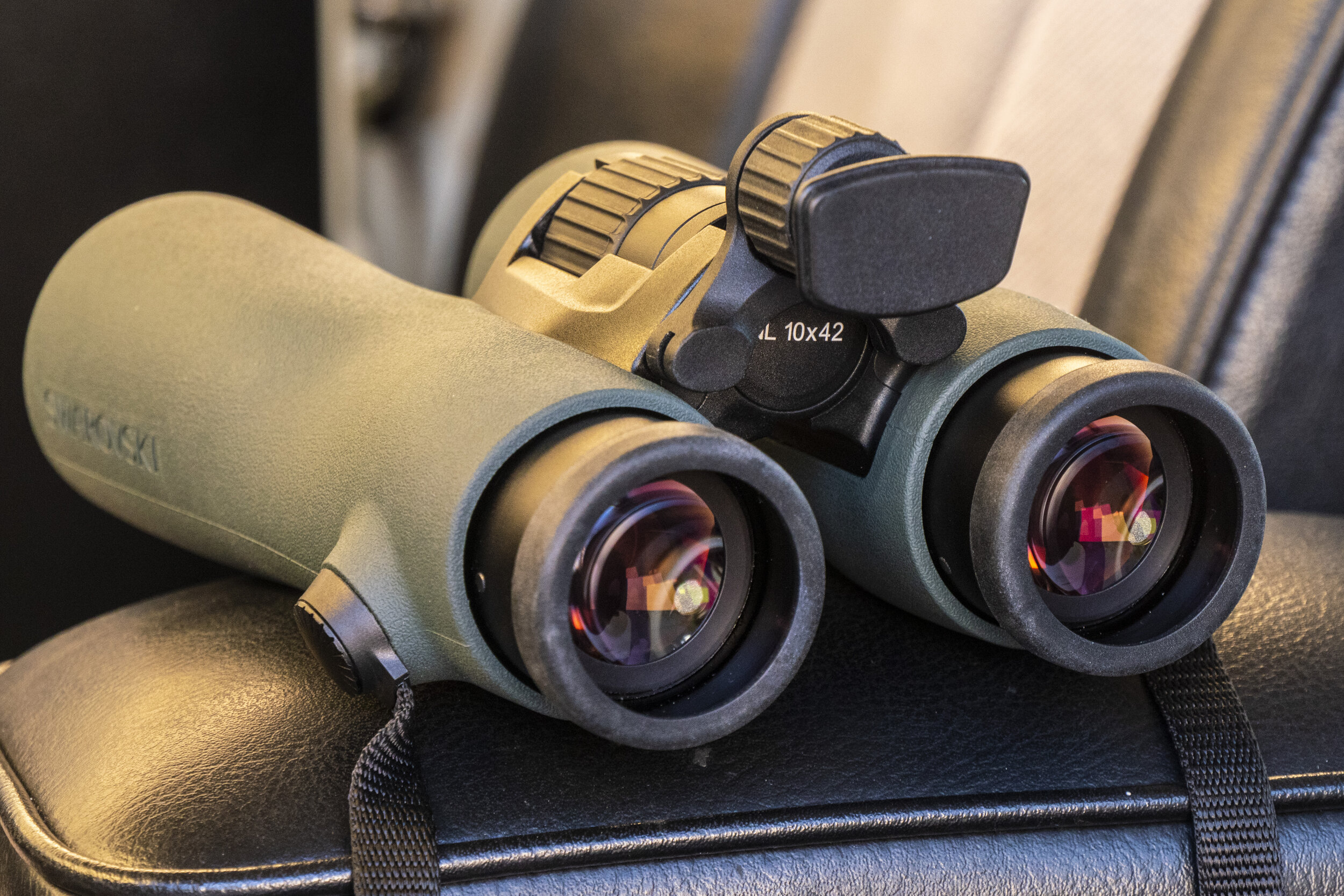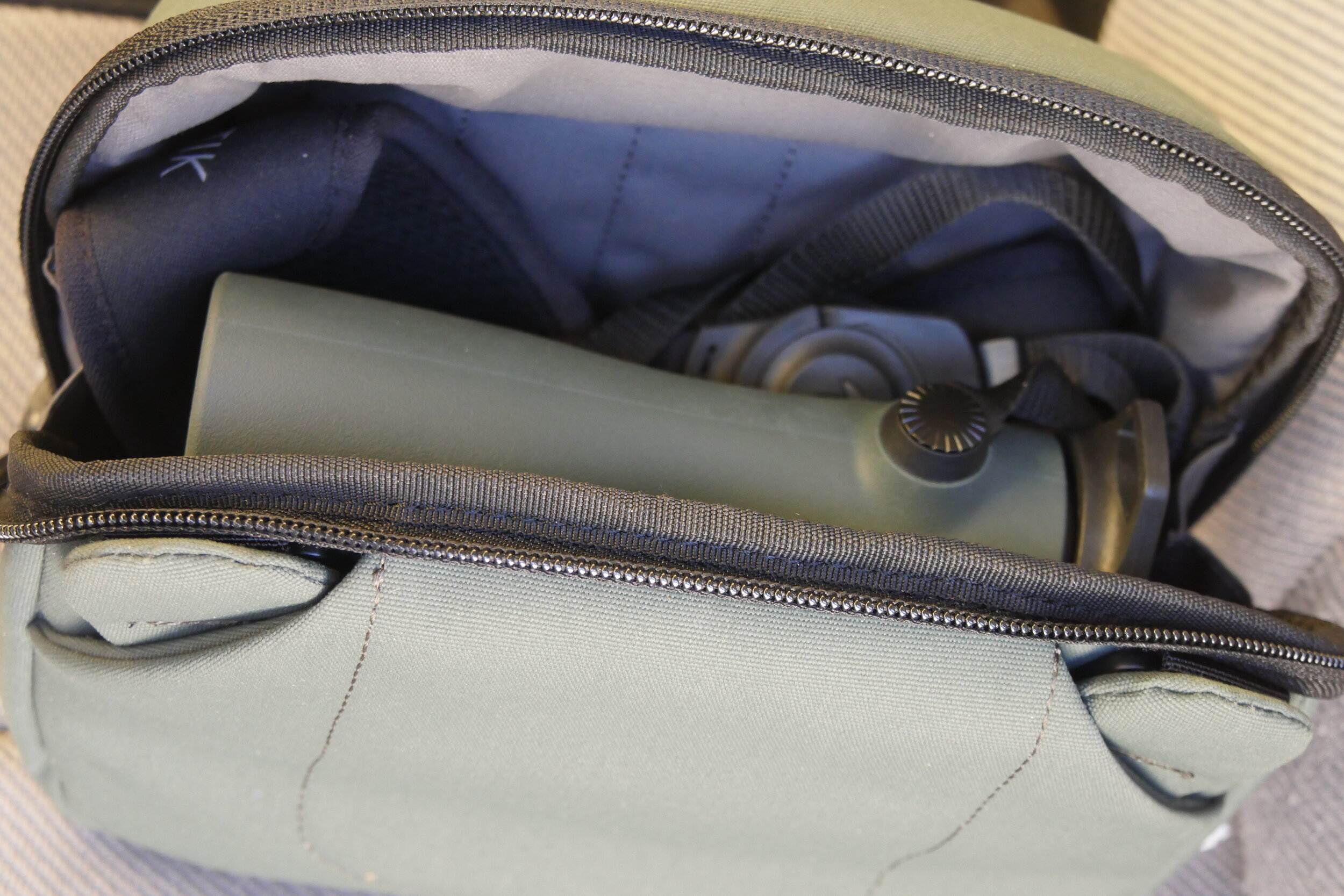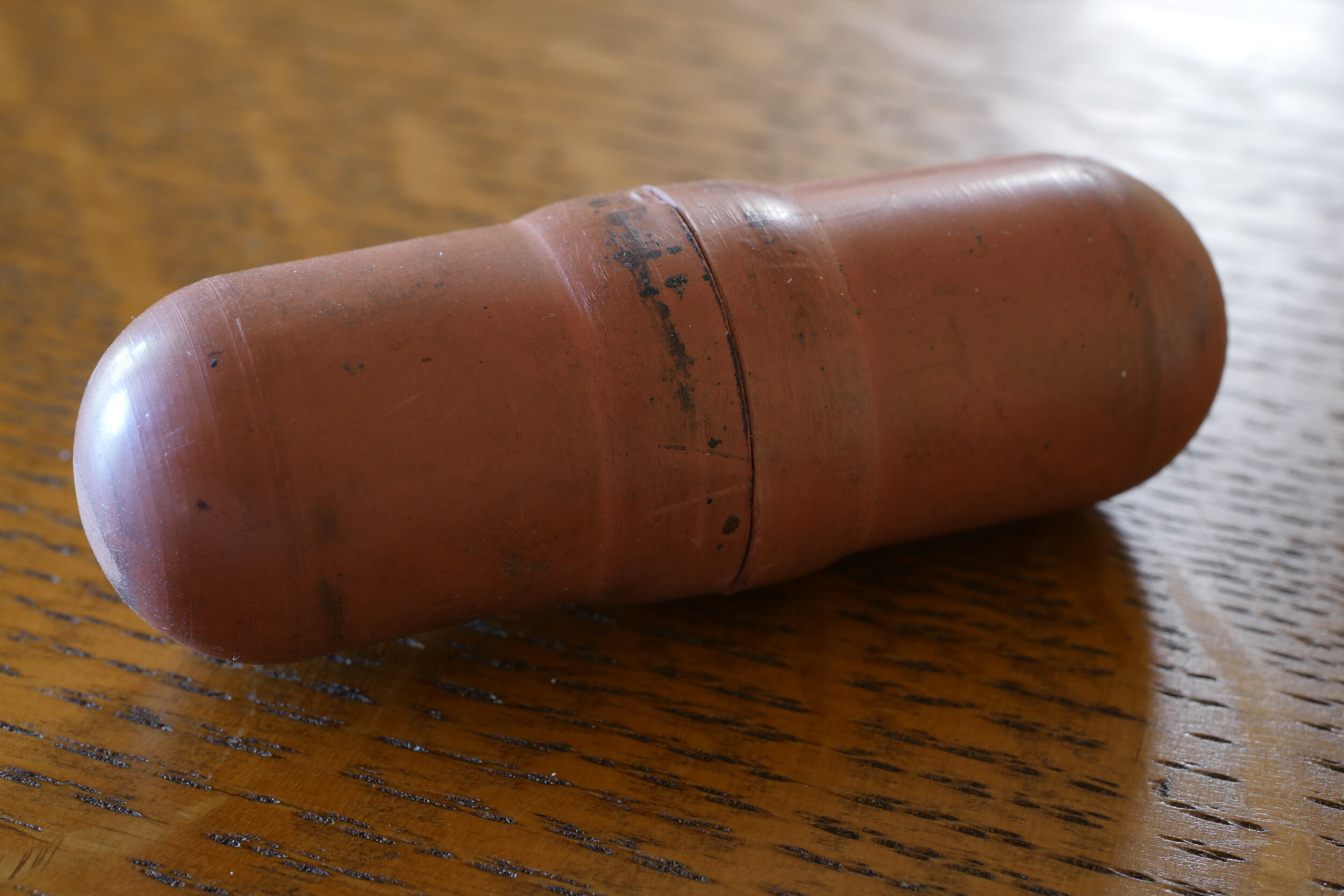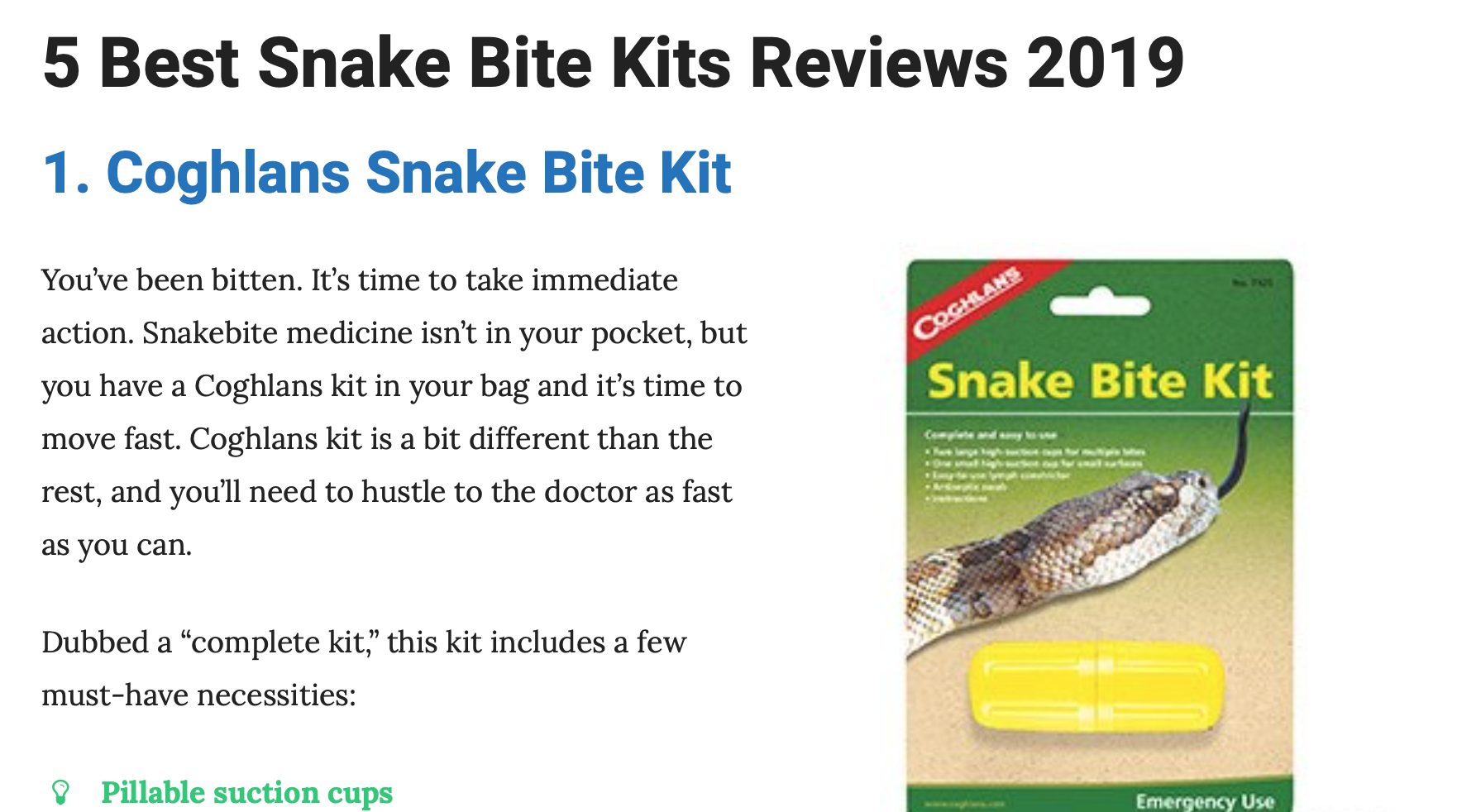
Overland Tech and Travel
Advice from the world's
most experienced overlanders
tests, reviews, opinion, and more
Neoprene Hi-Lift cover: Don't waste your money
Anyone who’s used a Hi-Lift knows that its otherwise bombproof lifting mechanism is surprisingly prone to jamming when impacted with seemingly minor amounts of dirt and mud. It’s usually easy to get the jack back into operation with a quick dousing of WD40 or virtually any other liquid, but it would be better if you could keep the dirt out in the first place.
One way to do so is to mount the jack inside the vehicle—rarely practical with the 31-pound many-edged beast that is a Hi-Lift. And what about after you use it and it’s muddy? You won’t want to put it back inside dripping goo.
Another approach that helps is mounting it high on the outside of the vehicle. When I had a roof rack on my FJ40 I did this, and indeed it seemed to stay reasonably clean. But retrieving and replacing it was a bit of a pain, and 31 pounds added to the already considerable weight of a ConFer roof rack didn’t help my center of gravity. (As an aside, ARB’s new Base roof rack system offers as an accessory a brilliant one-person Hi-Lift mount that cradles the jack underneath while you’re removing or attaching it.)
Although we drove for one trip in Australia with a Hi-Lift mounted crosswise on the front ARB brush guard, I hate that position (and can now answer, “Yes, I’ve tried it.”). It hampered visibility and hampered access to the engine compartment, and added, yes, 31 pounds in another poor spot to add 31 pounds—right above a heavy bumper and winch stuck way out front. (Finally—and perhaps this is strictly my own prejudice—it had too much of a poseur air about it, as though I was broadcasting that I frequently ventured to places where I’d undoubtedly need it, which is far from true. All it needed as an accent was a pair of limb risers.)
The mounts I see directly under the windshield of Wranglers are better in terms of weight distribution, I suppose, but can’t be very convenient for one person to access; the chances of slipping and gouging the hood must be fairly high. And I worry about the strength of those mounts in the event of a crash—say if you’re rear-ended and that 31-pound jack really wants to come back through the windshield at you.
All this brings me to another way to keep the mechanism clean: simply cover it. This would seem to be axiomatic, yet it took me 30 years before I finally bought one of those zip-on neoprene booties that “protect” just the mechanism.
Why did I put “protect” in quotes? Because I zipped this cover over one of our Hi-Lifts, which then sat on the truck for about a half year without being used. In the course of doing some electrical work on the vehicle I removed the jack, and out of curiosity took off the cover. Of course the plastic zipper (who thought that was a good idea?) took a pair of pliers to undo.
I was astonished to see not only more impacted dirt than I’d ever accumulated in an uncovered jack, but also some significant rust on bare metal parts. It appeared—at least in my impromptu experiment—that the jack cover did an excellent job of containing all the gunk that filtered past the necessarily imperfect seal, as well as holding in whatever moisture our southern Arizona climate let in. I can’t imagine what it would have looked like after the same period in a damper climate.
The cover went in the trash. I’ll just go back to WD40, because I’m not mounting a jack on the brush guard again.
Pinnacle product? The Land Rover Coram bottle jack
This photo could spawn a lot of really bad jokes: a jack for a Land Rover, made in Italy, sitting in a Land Cruiser.
Let me explain.
Few manufacturers pay much attention to the jacks they include for changing a flat tire. No salesman is going to pull one out during his pitch, and a lot of people these days simply call AAA if they have a flat, and surf the web on their phone until the truck shows up.
The typical jack on small to medium-sized 4x4 vehicles these days is a scissors jack, barely adequate for an unloaded vehicle and nearly impossible to use for some people if there’s a good load.
My FJ40 came with a bottle jack—a mechanical screw type. It was stronger, but limited in its rise to one extension of the shaft, and still a beast to operate if the Land Cruiser was loaded. Its top post was a simple circular disk and thus lacking in stability.
Land Rover took a different approach with the early Range Rover. Its jack was a bottle type as well—but hydraulic, made by Coram in Italy, with a 2,000-kg rating, which made lifting even a loaded vehicle much easier. In addition, they equipped it with two extra-long operating rods so you didn’t have to be stuffed sideways under the vehicle to work it. It had a double-extending ram for extra lifting height. Finally, the post incorporated a curved top piece that securely cradled the front or rear beam axle of the Range Rover.
The same jack came in early Discoveries as well, and possibly Defenders. However, I have heard that at some point (1995-ish?) the steel body was replace with . . . plastic? And later on a similar-looking jack was substituted, but made in China. All of these I’ve seen were black rather than the ketchup red of the Corams.
I found a nice one on eBay for $40, and it’s been my FJ40 jack ever since. They’re still easy to find, but beware—the downside to hydraulic jacks is that seals can wear and leak, rendering the jack useless (possibly why Toyota stuck with the screw type). If you buy one try it immediately; if it doesn’t work the first thing to do is check the hydraulic fluid level through the rubber plug. If filling it doesn’t help it will need rebuilding, which I understand many hydraulic specialty shops can do but have not confirmed. If at all possible, store the jack upright.
The Coram jack fits into ARB’s excellent jack base, which also accepts either a Hi-Lift or an ARB Jack.
ARB Solis driving lamps
I’ve written before about my admiration for ARB’s Intensity driving lamps. We have a set on both our Troopy and the FJ40, which have saved us from, respectively, kangaroo and cow strikes on remote roads on two continents.
The lamps on the Troopy are first-generation Intensity lamps, and I would have considered it difficult to improve on them, but in 2019 ARB introduced a V2 version with 35 percent more power. I put those on the FJ40, and indeed they are noticeably (even) brighter.
But now, just a year later, ARB has introduced an entirely new lamp, the Solis.
At first glance the Solis looks like another update of the existing, larger Intensity V2 AR32 (the Solis at present only comes in the larger size; there’s as yet no equivalent to the smaller V2 AR21). But there are actually quite a few design modifications, one major difference—and one huge difference.
The 32 in the V2 Intensity name refers to the number of Osram LED emitters in the lamp. The Solis ups this to 36, and, moreover, splits their duties. There are 30 4-watt emitters in the perimeter of the lamp, and 6 10-watt emitters in the center, to give some extra reach in the center of the beam, even in the flood-patterned model. As a result, the performance of both the spot and flood model of the Solis exceeds the V2 AR32 Intensity by about 20 percent.
The major difference is that the Solis is dimmable over a five-stop range, via a remote-control wand. On the surface it might seem pointless to build a 165-watt Osram-powered driving lamp and then make it dimmable, but in fact there are many situations in which you want more light than your high beams can provide, but less than the Solis’s full 9,500 effective lumens. On winding roads lined by trees, for example, the glare from full-powered lamps can be a hindrance. The reflection from road signs can also be nearly blinding at times. If there’s a lot of dust or moisture in the air you might be better off with less reach.
Remote controls the five-step dimming function
And the huge difference? That’s the price. The V2 AR32 Intensity lamps retail for $783 each. The Solis lamp of the same size retails for $558. Per pair. With a wiring loom.
What explains this? You might have already guessed. The Intensity V2 lamps are manufactured in the United States by Rigid Industries. The Solis was engineered in Melbourne, Australia, and is manufactured in China.
I’m a bit conflicted about this, but not much. Sure, I’d prefer the U.S.-manufactured items and I’m glad those are the ones we have. But I’m fully aware that not everyone can spare that kind of change for driving lamps, and those people are prime targets for the many knock-off lamps that replicate the look of the Intensity lamps without their build quality. The combination of Chinese manufacturing . . . let’s call it “efficiency” . . . with, one fully expects, ARB quality control, should provide a reliable alternative for those who fainted when they read that first price above.
Are there any other cost-cutting approaches? Not that I can see from photos or specifications. The Solis has a cast-aluminum body, a one-piece reflector, a polycarbonate lens, and is submersible to three meters. It echoes a bit of the Intensity look with two red trim sections, but these can be swapped out for black if you prefer a more low-profile appearance.
My hope is that both these lines survive. I’m happy they’re both there, but I’ll be disappointed if sales of the U.S.-made product simply disappear in the face of the in-house Chinese competition.
I’m hoping to get a pair of Solis lamps to actually test soon. In the meantime, ARB is here.
Swarovski NL Pure binoculars . . . a new paradigm?
One of my favorite binocular interactions took place when Roseann and I were caretakers in Brown Canyon, in the Baboquivari Mountains about 50 miles southwest of Tucson.
Among our duties was leading hiking and birding tours along the canyon’s sycamore-lined creek.
After we’d taken one group up to a natural arch on a morning walk, we all gathered on the big shaded porch of the caretakers’ house to have lunch and look at birds on our feeders and in the trees. At the time I was using Leica BN 10 x 42s, one of the best two or three of its type in the world, and one of the guests was an amiable but crusty older fellow who had spent much of the hike teasing me about the fact that his binoculars cost less than a fifth of what mine had.
Now he came and stood by me while we both leaned on the porch rail and scanned the trees, and started right in again.
“I’m sure they’re great and all, but mine do just fine. I just don’t see how those can be worth the money.” I had mostly smiled and shrugged up to this point, biding my time.
Soon, though, he spotted something and said, “Kestrel in the big dead tree on the other side of the creek. Can’t tell if it’s male or female. (Male kestrels are most easily identified by their blue-gray shoulders.)
I looked through the Leicas and said, “Male.”
He eyed me dubiously. So I took off the Leicas and held them out.
He accepted them with an exaggerated show of care and looped the strap around his neck. He looked through them toward the tree, adjusted the bridge to fit his face, looked again. He pulled them down and looked at me, then looked through them again. He did a slow sweep of the canyon, looked up at the top of the ridge, looked down at the blue-throated hummingbird at one of the feeders. Finally he pulled them off and held them out to me, and with a deep, shuddering, what-have-you-done-to-me sigh, said, “Okay. I can see how they’re worth the money.”
Let’s be honest: Not everyone needs a binocular that costs as much as a decent used car. (Side note here: I bounce back and forth randomly between referring correctly to the instrument in question as “a binocular,” and referring to it in the vernacular as “a pair of binoculars,” which of course it really isn’t.)
As a natural-history writer, guide, birder, and hunter I’ve always felt justified in spending whatever it took to carry the best optics, just as an auto mechanic might justify Snap-on tools, or a graphics designer an 18-core iMac Pro. But let’s continue the honesty: Many people, including me, unapologetically derive great satisfaction and joy from using the best of whatever equipment they employ, whether or not it might be a deductible expense. I can justify high-end optics, but in the end I simply enjoy them, and never tire of the sharp intake of breath I experience every time I magically bring a bird or a whale or a distant landmark or a Ferrari on a race track ten times closer.
The stratospheric upper echelon of binocular performance is a battleground in which three manufacturers, and sometimes a fourth, fight for dominance with instruments that are in every sense pinnacle products. These manufacturers—Leica, Swarovski, Zeiss, and occasionally Nikon when the company is feeling feisty—spare no expense to make their flagship product as perfect as it can possibly be, and damn the cost. The best glass, coatings, and prism designs to produce the brightest, sharpest image; the strongest and lightest materials to gain supreme durability, weatherproofness, and comfortable long-session viewing; and the latest technology to stay abreast or incrementally ahead of the current competition’s best.
Thanks to that, “Hey, I’m a pro, I need the best” justification, plus the opportunity to review binoculars a couple dozen times over the years, plus just general binocular geekness (I own . . . several . . . including a Zeiss 10 x 40 BGAT from West Germany, arguably the very first ultra-premium binocular), I feel competent to judge differences in high-end binoculars sometimes measured in a percentage point of light-gathering ability, or a molecule-wide fringe of chromatic aberration, or a couple of feet of field of view, or an ergonomic detail unnoticeable unless you’d had the instrument to your eyes for a solid half hour. For at least the last decade it was only such minute variations that defined the differences among the big three and the notion of which one among a transcendent group was “best.”
Until last month, that is—when Swarovski introduced their entirely new NL Pure line of roof-prism binoculars, in 8 x 42, 10 x 42, and 12 x 42.
I have a connection to Swarovski that goes back to the 1980s, when I bought a pair of their Habicht 10 x 50 porro prism binoculars, magnificent and bulky beasts that I used while guiding sea kayak trips in Mexico, simply strapping them down on the deck of my boat where waves frequently washed over them. They performed flawlessly for a decade until I decided to move to a more compact roof-prism instrument, at which point I sold the Swarovskis for more than I had paid for them.
My current binocular is a Swarovski 10 x 42 EL, a brilliant instrument built in the double-bridge style the big three adopted for their top-end products a few years ago. To get a feel for how good these things are, go outside and look at a car or tree a hundred feet from you, then walk up until you are ten feet from it. That’s what the view is like through the ELs—the world is simply ten times closer. The only things less than perfect about the ELs (for me) is that the molded-in thumb grooves don’t quite match where I put my thumbs—obviously a personal-fit issue—and the fact that the big focus wheel sits slightly behind the neck strap lugs. I like to keep two fingers on the focus wheel because I’ve developed a technique of “walking” my index and middle finger rapidly across the wheel to go instantly from close to far focus, and on this binocular the strap lugs lightly dig into my hands when I do this.
When I pulled the new NL Pure 10 x 42s out of the box, it was apparent the ergonomics were going to be in a different league. The optical tubes of the single-bridge design (which I prefer, although strictly for aesthetics) were markedly constricted in the center, giving the binocular an elegant wasp-waisted look. More important, that constriction made the NLs the easiest full-size binoculars to hold I’ve ever used, even one-handed.
It’s easy to get a full wrap on the narrow barrel
I’m told the engineers accomplished this through the why-didn’t-someone-think-of-this-before strategy of rotating the binocular’s Schmidt-Pecan roof prisms, but I haven’t yet seen an internal view of the optics so I don’t know if any other tricks were employed. In any case, when I tried the NLs I was immediately convinced they were lighter than the ELs—not so, they’re actually a few grams heavier but don’t feel it.
One-handed use is easy with the NL Pure
The focus wheel was another pleasant surprise—it’s now in front of the strap lugs and falls perfectly to hand, or finger as it were. I can finger-walk the Pures from their excellent close focus of just 6.6 feet out to infinity in a couple of seconds.
Focus wheel is perfectly positioned
But ergonomics were almost secondary to the real news. The NL Pure introductory video promised a new high water mark in the field of view for full-size binoculars, and that was an understatement. In the past one brand or another would boast of a field of view three or four feet wider than its competitors at 1,000 yards. I’d have to look through one, rolling my eyes back and forth, then through the other, doing the same, before finally concluding, yep, a bit of difference.
Optics transmit 91 percent of available light. The black inserts can be swapped out for hinged objective-lens covers for those who prefer them.
Not the Pures. I looked through my Leica 10 x 42 Ultravids, then through the NL Pures, and wham. The difference was stunning: 336 feet to a horizon-spanning 399. I looked through my own Swarovski 10 x 42 ELs—until now the company’s top of the line product—and then the NL Pures, and wham. Same difference. The field of view of the 10 x 42 Pures is the wide as the company’s 8.5 x 42 ELs. The only binocular I’m aware of that comes close to the field-of-view performance of the NL Pure is the Zeiss Victory 10 x 42, at 394 feet.
The challenge with providing such a wide field of view is maintaining sharpness all the way out to the edges of the field. The wider the field, the harder that is to do, and the greater likelihood of distortion and chromatic aberration as well. As near as I could tell, the Pures maintain sharpness and color to the edge of their 399-foot vew as well as the ELs do to their 336-foot view—that is, superbly.
Diopter adjustment is on a toggle behind the focus knob
So far, so spectacular. But along with the NL Pures the company sent a new (extra-cost) option: the FRP, (for Forehead Rest Pure, I think). And I have to be honest, when I saw this device for the first time I laughed out loud. It reminded me instantly of the Optigrab, Steve Martin’s ill-fated eyeglass accessory from The Jerk.
Not a gimmick. Really.
The forehead rest is exactly what it says—a small, adjustable pad that plugs into the bridge of the binocular after removing two screws. A dial moves it in and out to achieve gentle but solid pressure on your forehead to help stabilize the view—a problem for some people using 10-power binoculars, and probably a problem for most people using the NL 12-power instrument.
So, in the interest of due diligence, I removed the two little screws, plugged in the Optigr . . . I mean forehead rest, and went outside to try it.
And. Well. Dammit . . . the thing actually works. I’m very steady with 10-power binoculars, but using them with and without the rest I could beyond any doubt feel the difference—and trust me, I didn’t want to feel a difference. I instantly knew of a situation where this device would be a huge advantage for me: When I hunt deer or elk I normally do what is called, illogically, still hunting, which involves moving slowly through habitat and stopping frequently to glass. I always do this one-handed, keeping my other hand on the rifle. And the Pure forehead rest dramatically increased stability when I held the binoculars one-handed. (I often do this when hiking and looking for birds, too, come to think of it. And Roseann does it all the time while sketching.) Suffice to say the FRP works as advertised.
Even the NL Pure soft case is innovative. It opens sideways like a clamshell and the binocular lays in on its side. It’s far easier to access and store them than in the traditional vertical case. Well done Swarovski for rethinking something so mundane.
Quibbles? Okay: The strap incorporates a clever way to adjust its length instantly, but it leaves tails of strap flopping around. Since these weren’t mine I did not try simply cutting them off shorter . . .
Ergonomics, clarity, field of view. For the first time in years, I found a new premium binocular model to be a big leap from its predecessor, and a leap ahead of its competition. If you can justify the expense, you’ll find The Swarovski NL Pure worth every penny. If you can’t justify it, maybe consider a career change?
Swarovski is here.
Classic Kit . . . not. The snake-bite kit.
Jonathan (left, with a crappy homemade snake stick), Bruce Douglas, and Jeff Swanson about to head into the snake-infested hills.
As kids growing up in the Sonoran Desert, my friends and I were always aware of the presence of rattlesnakes in the terrain we hiked and played in. Not that it upset us—far from it. We thought it was the coolest thing possible, along with coral snakes, scorpions, and other, larger coolest things possible, like cougars in the mountains we camped in. We would have been big fans of Doug Peacock’s later observation that, “It’s not wilderness unless there’s something out there that can kill you.” But we knew always to watch where we put our feet and hands, and always to look down before stepping out a door—an instinct so deeply ingrained that I do it when stepping out of a pub in London.
In those early days, if we saw a rattlesnake while on a backpacking trip we usually killed it—it was simply the accepted thing to do then. To be fair, we also usually skinned, roasted, and ate it, so it wasn’t simply murder. Later on we learned a more tolerant attitude—but we never stopped being aware of the possibility that one day you might let down your vigilance, or just have a second of bad luck.
That was okay—because we had snake-bite kits. Identical to the rather alarmingly suppository-esque looking thing shown here.
Cutter (later better known for insect repellent) first produced these in the 1950s as far as I can tell, but by the 1970s they were official Boy Scout items, issued to the military in Vietnam, and eventually copied by several companies such as Coghlans and All-Molded Plastics (the one shown here).
The kit comprised two rubber halves, designed to be suction cups, and a smaller one inside for use on fingers. Also included were scalpel blades, an iodine ampoule, and a cord to use as a tourniquet. According to the instructions, if bitten you were supposed to tie the tourniquet above the bite to restrict circulation, lance each fang mark in a cross pattern with the scalpel blade, then use whichever suction cup was appropriate to suck out the venom. And Bob’s your uncle, right?
Actually, no. It’s fortunate we never had to use one of these things as directed, because we almost certainly would have done more harm than good, especially with that tourniquet, assuming we didn’t lance a major artery, and hadn’t spent a half hour following directions instead of heading for home and a hospital.
Many studies (such as this one, of a much more sophisticated device, the Extractor) have shown that not only do suction devices not remove a remotely significant amount of venom, they can actually delay the healing process by weeks due to severe localized tissue necrosis at the site of application. The best snake-bite kit today is universally recognized as a set of car keys, to get the victim to a hospital for proper treatment with a polyvalent anti-venom. In the U.S., fatality among snake bite victims is well under one-half percent. In fact—I looked this up years ago for a book and verified it—more people in the U.S. die each year from accidentally pulling vending machines over on themselves than die from snake bite. Intriguingly, both types of victims tend to be young males . . .
The good news is, the futility and potential harm from using one of these devices is now common knowledge. No reputable company would think of marketing a product proven to be as ineffectual as blood-letting, lobotomies, and, well:
Or . . . maybe not.
In fact, Coghlans still sells their kit in hardware and outdoor stores across the country. Not only that, but in researching this piece I came across an article on a site called Pestwiki.com titled, “The Five Best Snake Bite Kits for Survival,” published in 2019. Number one? The Coghlan’s kit.
It’s followed by the Extractor (see study above) and several others. Then, after telling us which are the “five best snake bite kits,” they follow it with a sort-of kinda maybe caveat:
Note that bit, “ . . . they do remove some fluid but extract much venom.” Typo? If so it’s a doozy.
Postscript: By the time I was 14 or 15 I’d given up killing rattlesnakes, and instead was keeping them in cages in my bedroom, right under the nose of my stepfather, who would have put me out in the street if he’d found out.
Much more fun than eating them.
Step 22 Gear's Silent Jack
I know what you’re thinking, but keep reading. This isn’t just another polyurethane handle keeper.
Some time ago I wrote about my homemade Hi-Lift jack keeper, here. It functions superbly in terms of keeping the jack handle secured, with no possibility of the keeper shifting. However, my keeper does nothing to reduce the rattling of a stowed Hi-Lift, which can be annoyingly loud if, say, you have the jack mounted on a roof rack above the driver or passenger window, as many of us do, or vertically in front of a door, as some FJ40 and Jeep owners do.
Enter the Step 22 Gear Silent Jack. The polyurethane handle keeper is more or less the same as a hundred others—although I found it fit tighter (better) than most. The trick to this keeper is the second molded piece that wedges between the base of the handle and the shaft:
This piece locks the entire jacking mechanism solid, completely eliminating movement. Remove the jack’s foot (easy with Step 22’s spring-loaded base-plate pin) and there is no noise, period.
The fit is very tight—I had to squeeze hard to get the handle keeper over the handle and shaft with the wedge in place—but that indicates to me it should stay effective for a long time. You also have an extra piece to keep track of, but that shouldn’t be a big deal. I found it t be a simple but worthwhile update to the standard poly handle keeper.
Step 22 is here. Take a look at their equipment cases too. I’m hoping to try one of their tool cases soon.
"Bespoke" Autohome tent for the new Defender
It’s astonishing how quickly aftermarket companies can produce accessories for new vehicles—especially highly complex products as winch bumpers and suspension systems.
In the case of Autohome’s new “bespoke” roof tent for the new Land Rover Defender, the designers probably didn’t have to work too hard. As near as I can tell from the specifications, the Defender tent is identical to Autohome’s stock Columbus Small XL clamshell model that you can install on any Plebeian 4Runner or Pathfinder, except perhaps for the color. Looking at the photo, it’s possible the company altered the profile of the side door a bit to better match the Defender’s optional side ladder, but that seems to be it.
Regardless of how actually “bespoke” it is, Autohome tents are of uniformly excellent quality, so if you’ve bought or ordered a new Defender and are planning to install a roof tent on it, these are worth considering.
Warn's "new" M8274 winch
When a product stays in production for a half century with virtually no change to its configuration or specification, you know the original designers were inspired with genius.
Such is the case with Warn’s M8274 winch. Introduced in 1974 as a mere tweak or two upgrade from the even more venerable Belleview winch (from 1959), the 8274 combined excellent power (8,000 pounds) with massive cable capacity (150 feet), and spur drive gearing that was not only superior in strength but more efficient than any other winch driveline on the market—75 percent, compared to 40 percent in the only other winch that can claim equally legendary status, the worm-drive Superwinch Husky.
The 8274 could also claim the fastest loaded and unloaded line speed of any production winch—an “advantage” that to my mind was not all that advantageous, since generally when I’m winching I want the process to proceed as steadily and slowly as possible. But some people like the speed, and in competition 8274s were commonly hotted up with second motors to increase speed still more.
Another advantage to the 8274 became apparent with the advent of synthetic winch line. The brake on the winch is external to the drum, which meant there was no chance of overheating the line when winching in reverse.
The 8274’s only practical disadvantage was its height and foot-forward mounting system, which required a dedicated bumper and a vehicle with clearance for the height. On my FJ40 it was a match made in heaven.
Thus from 1974 through 2019, the 8274 remained virtually unchanged. Now, however, Warn has announced a “completely new” version.
The “new” 8274 now boasts a 10,000-pound capacity thanks to a six-horsepower motor (although they have retained the 8 in the model designation, which referred to the original’s capacity). It can also be had from the factory with synthetic line. Importantly, the original solenoid-based switching mechanism for the motor has been replaced with a waterproof, solid-state Albright contactor. The solenoids, while durable, were not waterproof, and could on extremely rare occasions freeze in the closed position, which meant the winch would keep pulling even if the operator let go of the remote button.
So, why did I state “through 2019” rather than 2020, and why did I put “new” in quotes?
Because we have already seen this winch. It was introduced last year as the 70th Anniversary model (see here), with the same 10,000-pound capacity, Albright contactor, and synthetic line. What Warn has (apparently) done is to simply make the anniversary model the new standard 8274. Even the list price, an eye-watering $3,199, is the same.
Notwithstanding that tiny bit of marketing legerdemain, the new Warn 8274 looks set to enjoy another several decades as the winch against which all others are measured. If you have a serious expedition vehicle with an appropriate mount, there is no better choice.
Warn is here.
Hint: When using “Search,” if nothing comes up, reload the page, this usually works. Also, our “Comment” button is on strike thanks to Squarespace, which is proving to be difficult to use! Please email me with comments!
Overland Tech & Travel brings you in-depth overland equipment tests, reviews, news, travel tips, & stories from the best overlanding experts on the planet. Follow or subscribe (below) to keep up to date.
Have a question for Jonathan? Send him an email [click here].
SUBSCRIBE
CLICK HERE to subscribe to Jonathan’s email list; we send once or twice a month, usually Sunday morning for your weekend reading pleasure.
Overland Tech and Travel is curated by Jonathan Hanson, co-founder and former co-owner of the Overland Expo. Jonathan segued from a misspent youth almost directly into a misspent adulthood, cleverly sidestepping any chance of a normal career track or a secure retirement by becoming a freelance writer, working for Outside, National Geographic Adventure, and nearly two dozen other publications. He co-founded Overland Journal in 2007 and was its executive editor until 2011, when he left and sold his shares in the company. His travels encompass explorations on land and sea on six continents, by foot, bicycle, sea kayak, motorcycle, and four-wheel-drive vehicle. He has published a dozen books, several with his wife, Roseann Hanson, gaining several obscure non-cash awards along the way, and is the co-author of the fourth edition of Tom Sheppard's overlanding bible, the Vehicle-dependent Expedition Guide.






